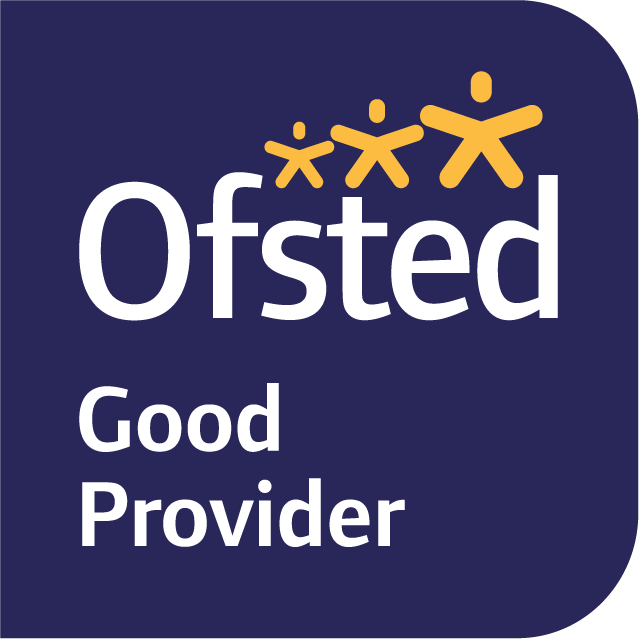
Mathematics
Teaching Staff
- R Graham (Director of Learning)
- R Glen
- S Binns
- P McArdle
- M Brown
- A Curtis
- R Coy
- M Saunders
- C Butters
- V Ward
Curriculum Intent for Mathematics
At King James I Academy, the Mathematics department’s intent is for the curriculum to be designed to ensure that students acquire a deep, long-term, secure, and flexible understanding of the subject. The curriculum will:
- Develop students’ ability to reason mathematically
- Enable students to become fluent in the fundamentals of mathematics through frequent and varied practice with increasingly complex problems over time such that they will develop conceptual understanding and the ability to recall and apply their knowledge speedily and accurately
- Allow students to solve problems by applying their mathematics to a variety of routine and non-routine problems with increasing sophistication, including reducing problems into a series of simpler steps and persevering in seeking solutions whilst appreciating various methods may be applicable
- Help students to develop an appreciation of the beauty and power of mathematics and have a sense of enjoyment and curiosity about the subject
- Enable students to reason mathematically by following a line of enquiry, conjecturing relationships and generalisations, testing hypotheses, and developing an argument, justification or proof using appropriate mathematical language
Department Information
What types of skills do employers look for? Problem solving, statistical analysis, proportional reasoning, and good communication skills, to name just a few. These transferable skills are useful in any job, and you can get all of them from studying Maths.
Maths is studied by all students until the completion of Year 11. Success in Mathematics is a key component to future career success with most employers now requiring a minimum of a GCSE Grade 4. Teachers in the Maths Department believe that all students are mathematically able and work to support our students in becoming numerically literate.
Students at King James I Academy are taught in ability groupings, which allows us to tailor their learning experience to their current stage of mathematical development. Following each assessment period the classes are reviewed and amended as needed in order to challenge and support our students in a way that will best suits their needs.
Our curriculum is designed to build upon prior learning established at primary school, to support their progression in becoming mathematically fluent, and to further their ability to reason logically and solve problems in a wide range of situations. Some of more able students are invited to take part in the United Kingdom Mathematical Trust’s individual and team challenges, attend Christmas Lectures at local universities, and compete in regional maths competitions.
Key Stage 4
AQA GCSE Mathematics (1-9)
Paper 1: Non-Calculator – 80 marks 1/3 of final grade
Paper 2: Calculator – 80 marks 1/3 of final grade
Paper 3: Calculator – 80 marks 1/3 of final grade
Students will be following either the Higher pathway (Grades 4 to 9) or the Foundation pathway (Grades 1 to 5) depending on their set. All students will study topics from the main areas of Mathematics – Number, Algebra, Geometry, Ratio and Proportion, and Statistics. GCSE Mathematics is 100% assessed by exams in the summer series of Year 11.
Targeted intervention sessions begin in Year 10 during our Period 6 enrichment sessions and allow us to use our Personalised Learning Checklists to tailor intervention to their specific areas of development. Our Grade 5 students attend annual revision conferences to improve their confidence and understanding of Grade 5 topics. Students aiming for the top GCSE grades in Mathematics attend a weekly after school class working on deepening their reasoning and problem solving skills on Grade 8 and 9 topic areas. Finally, our more able pupils in Year 10 attend the Christmas Lectures at local universities and compete in the AMSP’s annual Maths Feast.
Year 10
Foundation tier students build upon their KS3 work and begin to cultivate an understanding of Grade 5 topics including simultaneous equations, trigonometry, probability tree diagrams, and standard form.
Higher tier students demonstrate their fluency of key skills previously secured at KS3 and begin to work on Grade 5+ topic areas such as expanding two or more binomials, nth term of quadratic sequences, probabilities from Venn diagrams.
Year 11
All students continue to apply their content knowledge from Year 10 and build upon it. Algebra and proportional reasoning become ever more important in the lead up to their final exams. Students will hone their skills and apply their knowledge through a series of mock exams and regular use of past papers in order to ensure they are fully prepared for their GCSE Mathematics exams in the summer series.
Foundation tier (Grade 1 to 5)
|
Year 10 |
Year 11 |
|
HT1: Number: place value, directed numbers, order of operations, four operations. Geometry: measures, convert units, scale drawing, isometric grids, nets. Stats: frequency tables, pictograms, bar charts. |
HT1: Ratio, proportion, and Rates of Change: FDP, % of amount, increase/decrease by %, one quantity as a % of another, compound measures, compound interest, repeated % change, reverse %, direct and inverse proportion. Stats: sampling, pie charts, scatter diagrams, averages of grouped data |
|
HT2: Stats: line graphs, identify trends, averages and range, select best average. Geometry: Angles – basic facts, triangles, polygons, parallel lines, special quadrilaterals, bearings. Number: factor, multiples, primes, HCF, LCM, square numbers and roots, use of calculator |
HT2: Geometry: Constructions, Loci, Sectors – arc length and area, Volume and Surface Area – pyramids, cones, and spheres |
|
HT3: Number: Rounding and approximating, significant figures, Decimals – multiply and divide, Fractions – 4 operations, terminating, recurring, reciprocals. Algebra: linear graphs – plot, identify gradient and y-intercept, write equation of line from its graph, parallel lines |
HT3: Algebra: Sequences – recognise and generate, nth term of linear sequences, special sequences. Geometry: Pythagoras Theorem and Trig – applications, isosceles triangles, and bearings |
|
HT4: Algebra: conversion graphs, solve simultaneous equations graphically, substitute into expressions, expand brackets, factorise expressions, FOIL, factorise quadratics, change subject of the formula. Ratio, proportion, and rates of change: Ratio – simplify, divide in a ratio, scale up, Speed-Distance-Time, Direct proportion, Best buys |
HT4: Geometry: congruent triangles and similarity. Probability: Combined events, two-way tables, Venn diagrams, tree diagrams. Number: index laws and powers of 10. Number: Standard Form – convert and calculate. |
|
HT5: Geometry: Perimeter and Area – rectangles, compound shapes, triangles, parallelograms, trapezia, circles, Rotational Symmetry, Transformations, Vectors. Probability: calculate simple probability, probability of event not happening, mutually exclusive events, exhaustive outcomes |
HT5: Algebra: Simultaneous Equations – elimination and substitution methods, linear inequalities, Non-Linear Graphs - distance-time graphs, quadratic graphs, solve quadratics by factorising, identify roots and turning points, cubic and reciprocal graphs Begin Exam Prep |
|
HT6: Probability: experimental probability, expected value, listing and counting strategies. Geometry: volume and surface area – cuboids, prisms, cylinders. Algebra: Equations –solve two-step, two-sided, brackets, and fractions |
HT6: Exam Prep |
Higher Tier (Grades 4 to 9)
|
Year 10 |
Year 11 |
|
HT1: Number: multiply and divide decimals, estimation, number types, prime factors, HCF, LCM, four operations with fractions, use of calculator, increase/decrease by a %, work out % change. Stats: data types, averages and range, select most appropriate average, scatter graphs, correlation, and line of best fit |
HT1: Number: estimation, powers and roots, negative and fractional powers, rational numbers, reciprocals, recurring decimals, surds and bounds. Quadratics: plot, solve by factorising, by formula, and by complete the square, identify roots and turning points, solve simultaneous equations one quadratic/one linear, solve quadratics by method of intersection, quadratic inequalities. |
|
HT2: Sequences: linear – generate, identify and use nth term, continue and recognise special sequences, quadratic – generate sequence and find nth term. Ratio and Proportion: ratio calculations, direct proportion, best buys, compound measures, compound interest, successive % change, reverse %. Angles: basic facts, triangles, polygons, parallel lines, special quadrilaterals, scale drawings and bearings |
HT2: Stats: Histograms, pie charts, cf graphs, IQR, box plots Probability: AND/OR rules, tree diagrams, conditional probability. Circle Theorems. |
|
HT3: Geometry: congruent triangles, rotational symmetry, transformations, loci, plans and elevations. Algebra: expand brackets, factorise quadratics, re-arrange formulae. |
HT3: Direct/Inverse Proportion – work out the constant and equation of proportionality, Pythagoras and Trig: 2D and 3D problems, trig values between 0 and 360, sine and cosine rules, area of triangles using sine, Algebra: Distance-Time graph, Velocity-Time Graph, estimate area under the curve, rates of change |
|
HT4: Geometry: Area of circles, parallelograms, and trapezia, Sectors, Volume and Surface Area of prisms, cylinders, pyramids, cones, and spheres, Linear Graphs: draw graphs, identify gradient and y-intercept, find equation of line given the graph, solve simultaneous equations using a graph, parallel and perpendicular lines. |
HT4: Algebra: equations of circles, other graph families, transformations of f(x), Algebra: Algebraic fractions, re-arrange formulae, function notation, inverse and composite functions, iterations. |
|
HT5: Geometry: Pythagoras Theorem – applications, in isosceles triangles, 3D shapes, Trig – SOH CAH TOA, bearings, in isosceles triangles |
HT5: Vectors: add and subtract, multiply by scalar, vector geometry problems. Exam Prep |
|
HT6: Probability: experimental probability, expected value, Venn diagrams. Number: index laws, standard form. Algebra: linear equations, simultaneous equations by elimination and substitution, inequalities, and trial and improvement |
HT6: Exam Prep |
Learning Journeys
Higher Mathematics
| Year 10 | Learning Journey - Higher Maths - Year 10.pdf |
| Year 11 | Learning Journey - Higher Maths - Year 11.pdf |
Foundation Mathematics
| Year 10 | Learning Journey - Foundation Maths - Year 10.pdf |
| Year 11 | Learning Journey - Foundation Maths - Year 11.pdf |
